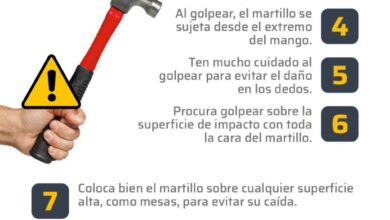Advantages and disadvantages of each type of dynamom
One of the most unknown aspects of dynamometers is the wide variety of products on the market. It is true that many of them are aimed at more industrial users, but this does not prevent us from knowing the advantages and disadvantages of each of them.
Having the necessary tool for the task we are performing is essential. Something that applies to small tools such as screwdrivers, but also to larger ones such as dynamometers. A segment in which, contrary to what it may seem, there is a wide variety of products to resort to, depending on what we want to do at any given time. So that you have more information about each of them when choosing which is the best dynamometer for your workshop, we are going to take a look at the most common dynamometers and what their advantages and disadvantages are.
analog dynamometers
The first model that we are going to analyze is the analog dynamometer, in which the spring itself indicates the corresponding force measurement. These models have the advantage of being economically priced and offered in different sizes and capacities. On the side of disadvantages, we find some such as the fact that their ladders are usually scarce and are not usually the most suitable for large loads. Something that does not help that the product has to be normally held by the user or attached to the wall or ceiling. All this without forgetting the lower precision of this analog system when it comes to giving us the measurement it performs.
digital dynamometers
In the case of digital dynamometers, we forget about the torsion spring as a reference element, seeing it replaced by a complete digital screen. Something that makes it much easier to see the measured values and that has the additional advantage of adding more precision to them, according to the number of decimal places included on the screen.
On the side of the drawbacks, the limitation of the scale continues to be maintained, which, although it is larger than in analog models, can continue to fall short for cases in which we have to make measurements of large weights or forces. In any case, the wide variety of existing models makes it easier to choose the precise model.
hydraulic dynamometers
We make the leap to the world of industrial dynamometers, starting with hydraulic models. These have a complete operating and cooling system with which it is possible to run trials and tests at high speed levels with low inertia and for a long time, at least as long as the cooling system is capable of supporting the process.
This is precisely one of the main drawbacks of this system, which requires a significant investment in the cooling system. Something that involves the installation of water tanks, pumps and cooling elements. This liquid is also involved in braking, so that when measuring torque, the coolant can cause changes in the results, which must be taken into account. Some aspects that also generate a greater need for maintenance than other models, due to having to take care of the cooling part.
Electrical eddy current dynamometers (Eddy)
Eddy-type dynamometers or eddy current electric dynamometers are an alternative to hydraulic models, with the main advantage being the high level of torque for braking even at very low revolutions. Something that allows us to have a high level of precision in control regardless of the speed of rotation or the torque we are using. On the other hand, except in the models that are cooled by air, it is possible to have an independent braking control, since in the models cooled by water it is easier to manage said braking. As last advantages of these models we find a high resistance and a simpler and less expensive maintenance, especially in the air-cooled models.
On the disadvantage side we have the cost, which increases more in water-cooled models, due to the additional installation required. For air-cooled models, the time during which full power braking can be used is reduced, and a lower rpm should be used immediately after, depending on the dynamometer’s ability to dissipate heat.
electric dynamometers
Electric dynamometers, whether alternating or direct current, have the same advantages as the Eddy models that we just mentioned, also having less inertia. Something to which is added the possibility of also using them as a motor for testing transmissions and other passive elements. On the cons side we find a higher inertia than in a mechanical model, a considerable cost of the product and the controller and a limited power capacity, so they are not suitable for tests or demands of very high operating power.
inertial dynamometers
As the last outstanding model we are going to analyze the inertial dynamometers. These models are the simplest of all those that we have discussed in the industrial segment, which has several advantages. One of them is their low cost and low maintenance, so they are highly recommended for simple tasks. They are also easier to manage and control than more complex models, so if you don’t have big needs this is all you need.
On the drawbacks side, we find problems such as the need for a good processing system to achieve adequate results. It is also necessary to know that this model always offers the same load and that it depends on the acceleration. Something that prevents, for example, that they can carry out tests at a stabilized load. Finally, it should be remembered that these models also have lower accuracy, mainly due to the presence of external elements that cannot be measured during use, as well as the inertia of other rotating elements.



